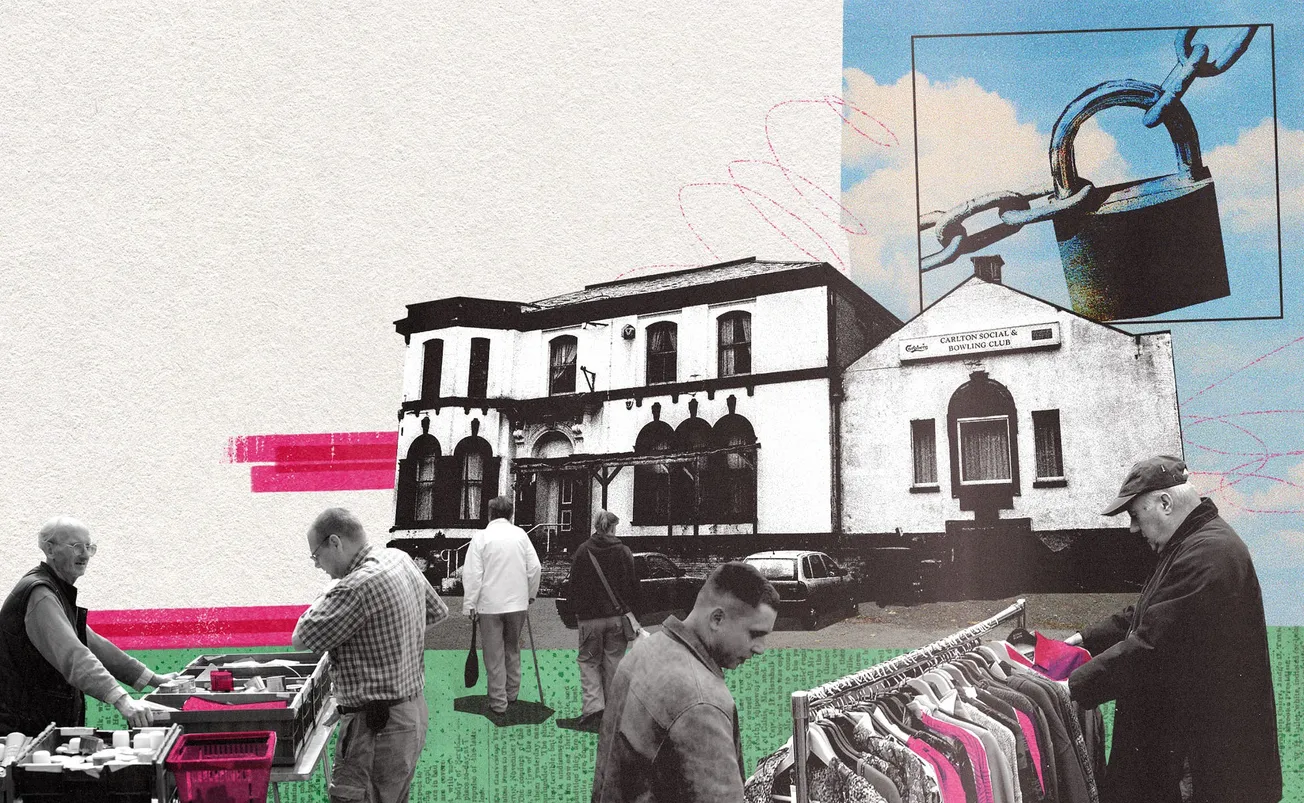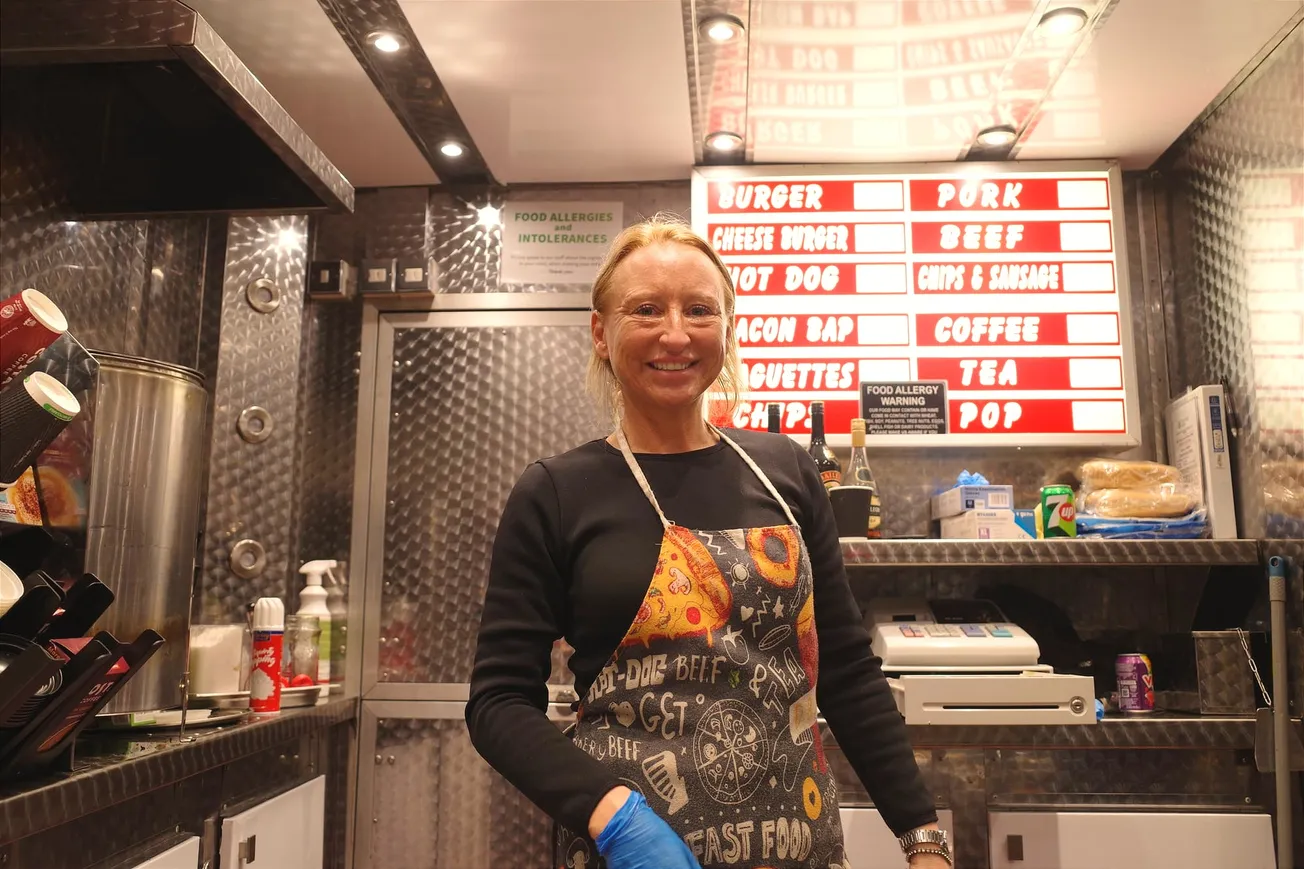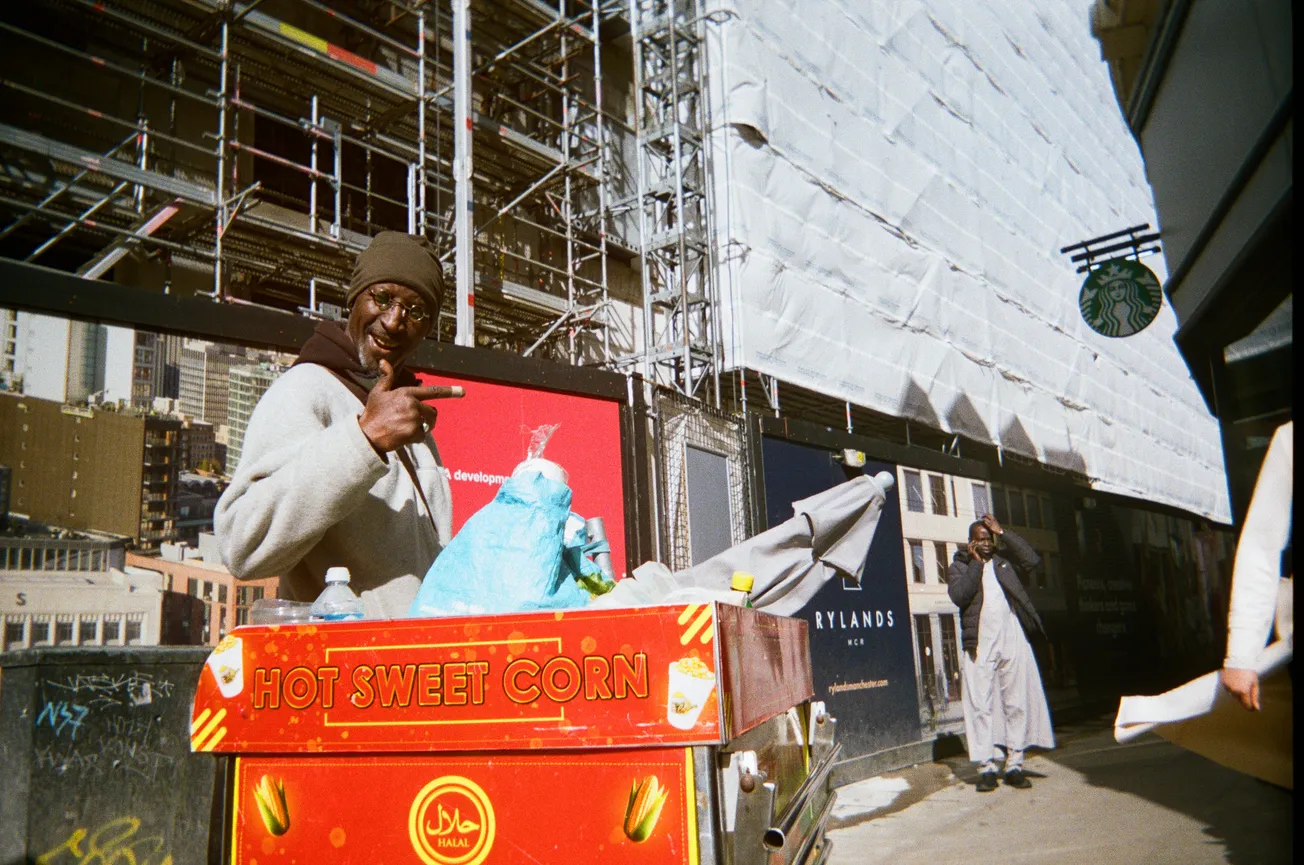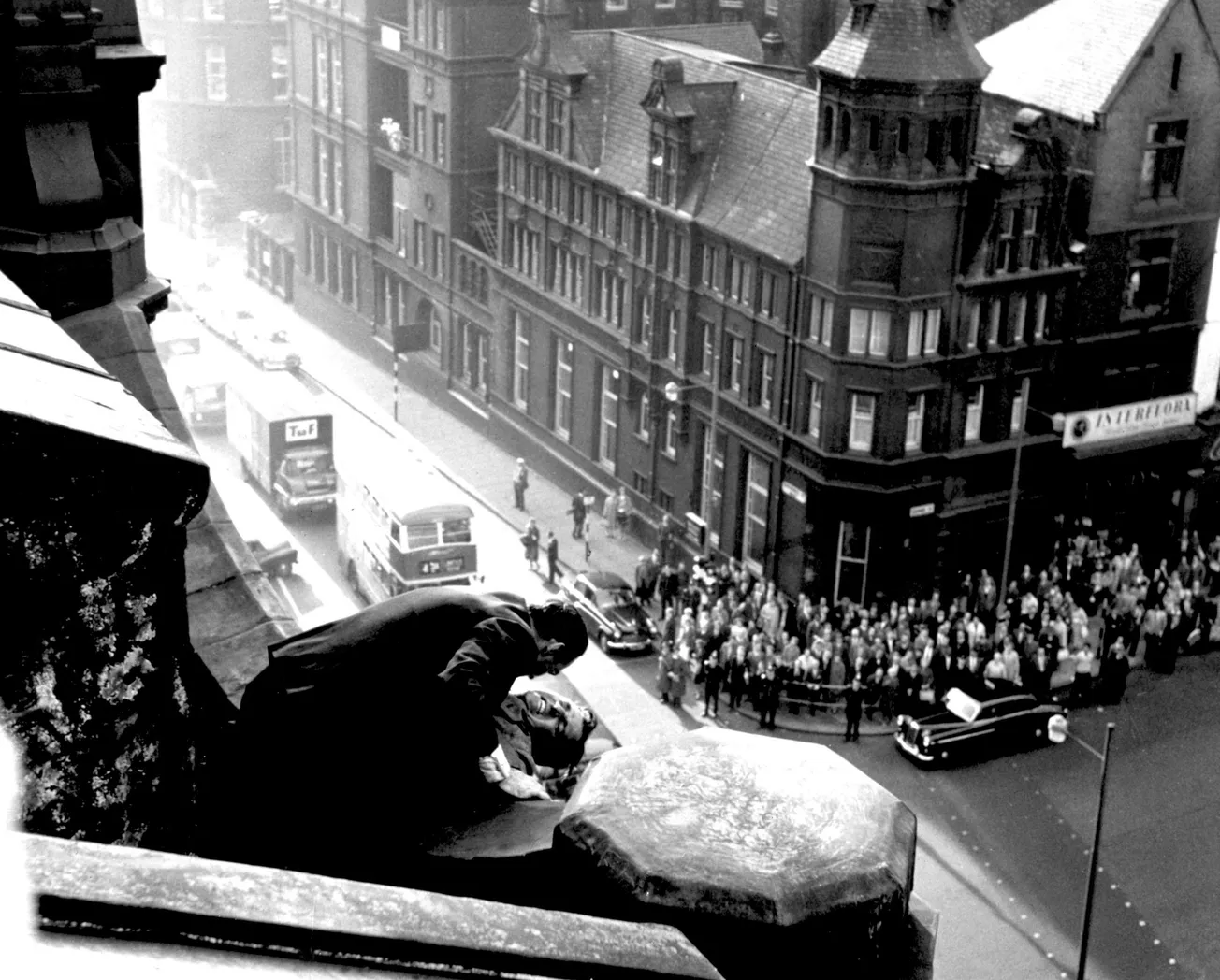By Sophie Atkinson, with additional reporting by Victoria Munro
It’s a pretty blue-skied Friday morning — the last gasp of summer — as I walk to Pauline Balderstone’s house. She lives in Chorlton and the rest of the houses on her road are uniform, slightly sterile. At hers, there are gaudy flowers in the garden and a vintage car parked in the drive.
Yet I’ve already lost any hope that she’ll be home. For the past three weeks I’ve been pursuing a he-said/she-said bust-up involving two factions fighting over the use of a community space. Hearing from both sides is key, but for every door of the connected addresses I’ve knocked on, no one’s been home. Why should this be any different?
But this time, I hear footsteps. There’s an attached porch, the sort of structure favoured by the safety-conscious. She opens the front door, but doesn’t venture to open the second one: I’m left blinking behind a pane of glass. She watches me levelly and when I attempt to explain myself at a narrator-of-a-school-play volume, cups her ear. Somehow, I sign language her into opening the outer door but communication doesn’t get much easier.

Flustered, I phrase myself poorly. I explain that I’m covering the story of the Carlton Club dispute — about the social club who run the events being evicted, and the building company taking the management of the club back over — but she talks over me: “What do you mean, taking back over? It’s our club.” But she stops herself: perhaps she believes she’s already said too much. “Anyway, I can’t talk to you. The solicitors are handling it, so I can’t comment.” I’m on the cusp of protesting that this doesn’t apply — it’s not a criminal case, after all — but she waves my reasoning away. I leave my contact details with her and tell her to mull it over: if she wants to talk, I’m here.
To call the Carlton Club a South Manchester institution is to traffic in understatement: after all, it’s run for 111 years. In recent memory, the Whalley Range social club has seemed to thrive, with rocketing numbers of members and footfall. At its lowest point, the club purportedly had just 20 members; today, it stands at over 1,100.
But in August, the group running the club made an announcement: they’d been served an eviction notice and needed to fundraise so they could fight to stay in the building. When I hear people around me talk about it, they assume it’s the kind of sad story we’ve all become used to: a profit-motivated landlord turfing out a community-motivated club, presumably so the building can be sold off and converted into flats.
I soon discover the reality is rather more complicated than this. For the company evicting the Carlton Club is, in fact, the Carlton Club itself — or rather, the Carlton Social and Bowling Club Building Company Ltd. It’s this building company that is currently trying to oust the Carlton Club Community Interest Company from the building both factions have occupied since King George V sat on the throne.
This is a story that’s bigger than just one social club. The schism that has torn the Carlton Club in two raises questions around how to ensure such community groups go the distance. As long-standing member Joy Wales puts it, “The club is for people in Whalley Range and Whalley Range has changed.” But in a community-led group that has ballooned so quickly, how do you ensure old and new members trust each other sufficiently to see eye to eye? And how, on enacting a big change, do you get the buy-in of those who prefer how things used to be?
Damp and chip fat
Let’s start with the history. The Carlton Club building company is not new: it was set up in 1913 to purchase Rowan Lodge, the club’s home site. No group in charge of running the Carlton Club has ever had a formal lease with the building company — it was simply unnecessary, as the building company only existed to house the club.
In the early 1900s, Rowan Lodge was owned by a wealthy family whose income came from the textile industry, but who fell on hard times. They eventually sold it to a group of “wealthy gentlemen of Whalley Range” (in the words of the acting chair of the social club, Justin Anderson) who wanted to establish a club. By the 1960s, the Carlton Club had become more of a social club than a gentlemen’s club – a place where you could throw darts, play cards and snooker and, if you were lucky with the weather, do some crown green bowling.
From the sounds of things, it was a sleepy sort of place until Matt Worden arrived in Whalley Range at the turn of the millennium. Matt, then 32, remembers walking past the big white building in his neighbourhood where he never saw anyone at all and wondering what it was used for. One day, he came across two men out working on the bowling green and went to find out. Instead of answering, they posed their own questions: “What my connection was to the area, maybe where I came from in general, it was quite a weird little interchange,” he explains. They told him it was a social club and that he should stop by for a drink. One autumn evening, he pitched up with two friends, rang the doorbell, and was let in.

Inside, the gas had been turned off because they hadn't paid the bill. The whole building smelled of damp and chip fat, and the bar didn’t have any beer on draught, just cans. There were about seven other people there, largely men in their sixties and seventies, and a bingo game was running (Matt and his friends kept having to move seats because they’d inadvertently taken someone’s usual spot). When Matt quizzed the club secretary about how he could join, the secretary seemed to shrug him off: he would need to attend an AGM and he didn’t know when the next one was. The sense Matt got was that he was allowed to come there and have a drink, but he wasn’t allowed to join.
Nevertheless, he left feeling euphoric about the potential of the building and its obvious beauty. He kept going and eventually, with friends, started putting on what he thinks was its first regular club night, Home on the Range. He’d DJed at house parties before, but never a public event, yet the Carlton Club made sense. He had kids and no longer had the time and energy to go out in the city centre. They played classic disco, house music and “funky stuff — it’s beat-y but not too hard”, everything from Sister Sledge to Mr. Scruff to Michael Jackson. As time passed, more and more people came along, reaching the capacity limit of the club at the time (100 people), with 18-year-olds dancing alongside 70-year-olds.
The renaissance
Multiple interviewees date the “renaissance” in the club’s history to Home on the Range. Suddenly, it made the Carlton Club visible — no longer a mysterious white building, but somewhere you could go inside and have the time of your life. It started a chain reaction: more people joined as members and founded their own club nights or held activities there. Home on the Range clubbers started dropping in throughout the week.
In this article, I’m going to use the terms “the old guard” and “the new guard”, because this was the way most people I interviewed referred to the two groups. It’s not an exact science, but I’m mostly referring to those who joined before Home on the Range (the old guard) and after (the new guard).
Friendships started to form across the old guard and the new, and for a long time, it seemed like the two worlds could co-exist semi-comfortably. The old guard could still have their darts team and their bridge games, and the new guard could explore using the building more broadly — opening it up to other events. When you ask people about the Carlton Club now, you hear about book clubs, yoga classes, Zumba, car boot sales, bike repair shops and local GPs prescribing gardening at the club as a treatment for mild depression. All of this was thanks to the new guard’s hard work.

Still, I say only “semi-comfortably”, because any organisation where hundreds of different people share a space is never going to be entirely frictionless. Two interviewees from the new guard mention incidents of sexism and “old-fashioned attitudes”. They allege that a former building company director, who has since died, pinched women’s cheeks, and they say other men there seemed to feel as if “it was okay to touch me, put arms around me, patronise me, talk across me in discussions. I'd have to say that's not appropriate, please stop”.
Manchester deserves great journalism. You can help make it happen.
You're halfway there, the rest of the story is behind this paywall. Join the Mill for full access to local news that matters, just £4.95 for the first 3 months.
SubscribeAlready have an account? Sign In

Comments
How to comment:
If you are already a member,
click here to sign in
and leave a comment.
If you aren't a member,
sign up here
to be able to leave a comment.
To add your photo, click here to create a profile on Gravatar.






